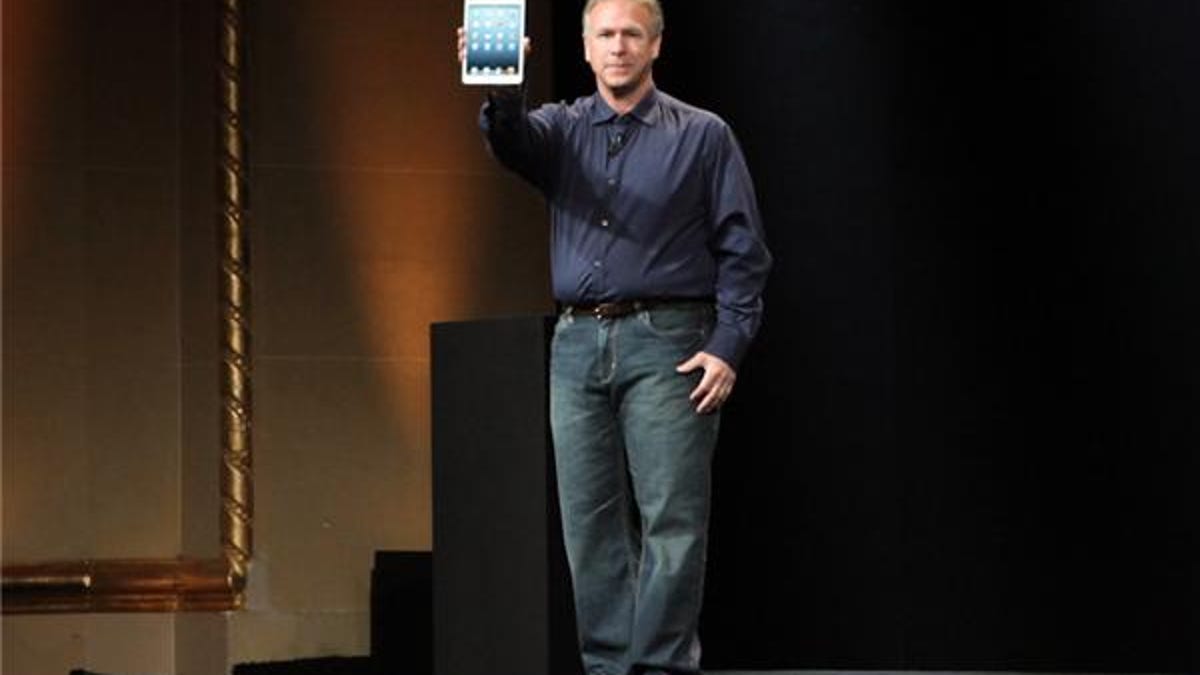Phil Schiller: Optical drives are 'anchors on where we want to go'
Apple's design and engineering craving for thinner and lighter -- and the move to digital content delivery -- means the optical drive is now a lowly peripheral device.

Fresh off the introduction of its latest products, Apple marketing chief Phil Schiller explained his company's abandonment of built-in optical drives in its new Macbooks and iMacs.
"These old technologies are holding us back," he told Time. "They're anchors on where we want to go. We find the things that have outlived their useful purpose. Our competitors are afraid to remove them. We try to find better solutions -- our customers have given us a lot of trust."
Full coverage of Apple's iPad mini and other announcements
The senior vice president of worldwide marketing also noted that the solid state storage used in Apple's products is more reliable than the mechanical devices with rotating drives. Apple does offer a USB $79 optical drive, and of course, points to iTunes and Apple stores as the way to get digital content, such as movies and apps, on demand.
Time's Harry McCracken asked Schiller about making cheaper Macs. "Customers have come to understand that Apple's products aren't priced high -- they're priced on the value of what we build into them," Schiller said. That said, they are priced with very healthy margins that have allowed Apple to become the most valued public company.
Schiller pointed to the more than 100 million iPads sold as an example of how Apple's value proposition is received by customers. However, in the last quarter the iPad had less than 10 percent growth, compared with 132 percent and 51 percent in the previous two quarters.
As a company, Apple has probably been the most obsessed with the fit and finish of its products, and the pricing reflects the idea that it can charge a premium. The optical drive was eliminated in the Macbook and new iMac to satisfy Apple's design and engineering craving for thinner and lighter.
The new iPad Mini will be a good test of whether Apple can sustain its premium pricing and margin advantage as it enters more categories and the competition heats up.
At $329, the iPad Mini with 16GB of storage and a 7.9-inch 1,024x768 pixels (163 ppi) display is more expensive and has a lower-resolution screen than its 7-inch competitors. During the iPad Mini launch presentation, Schiller compared it to a Google Nexus 7, criticizing Google's plastic casing and smaller display viewing area. But the Nexus 7 is $249 with 16GB of storage and a 7-inch 1,280x800 HD display (216 ppi). The iPad Mini's claim to the thin and light crown (308 grams, 0.28-inch thick) and more viewing area may be enough to sway customers to pay nearly $80 more than the Nexus 7 (340 grams, 0.41-inch thick) costs.
So far, the iPad Mini is in high demand. Within minutes of Apple accepting online orders, it was backordered for delivery by two weeks. Of course, it's hard to know just how many iPad Minis Apple has ready to go on its official November 2 delivery date.

